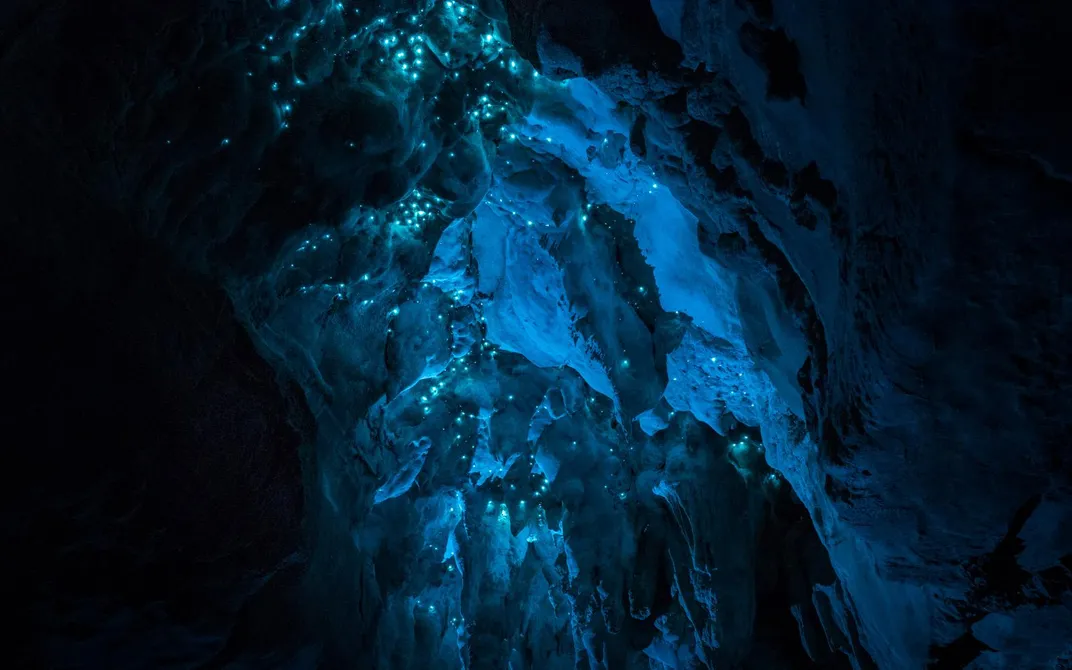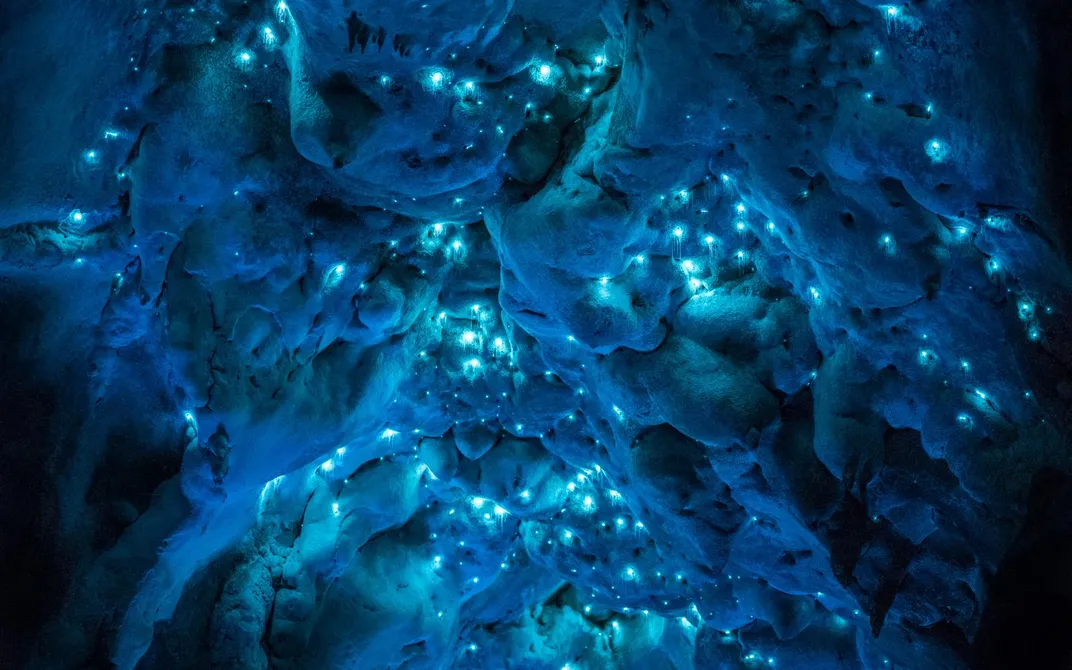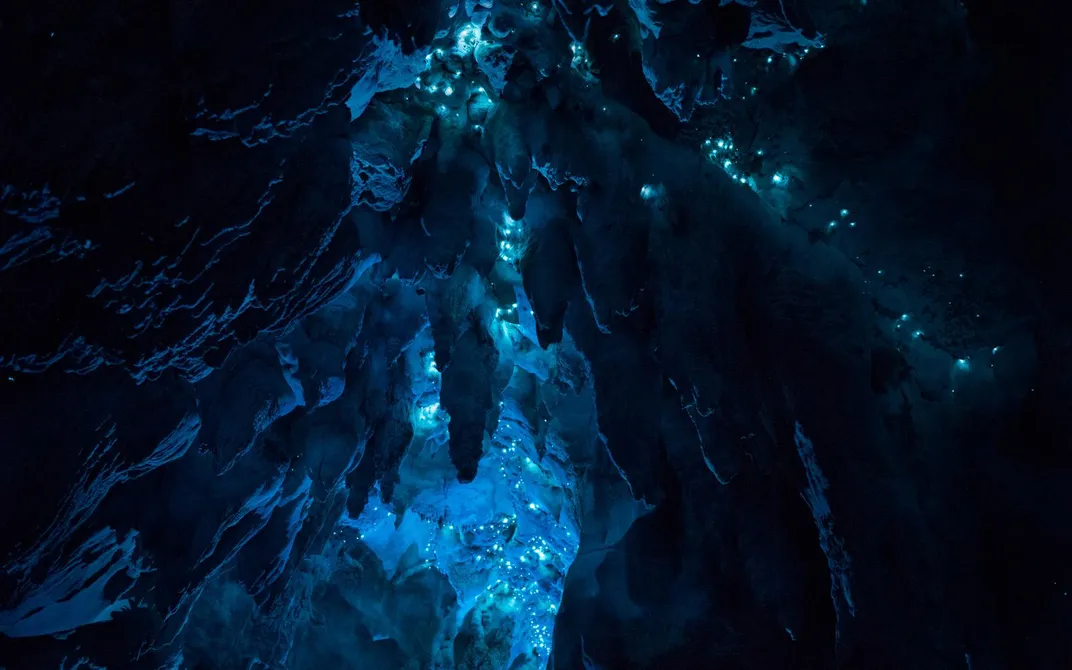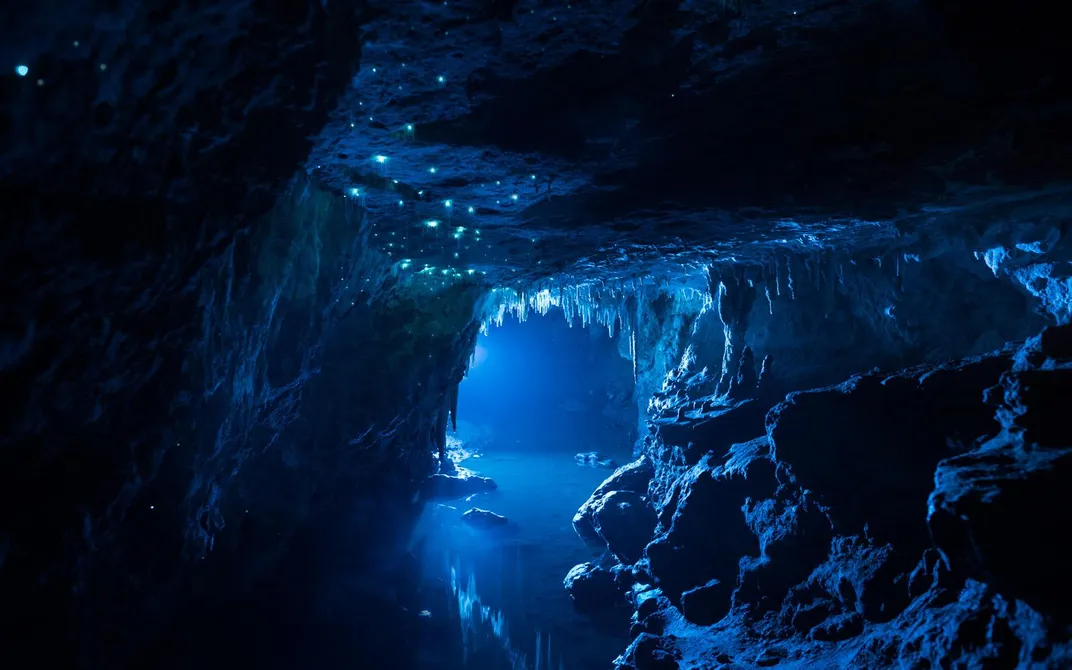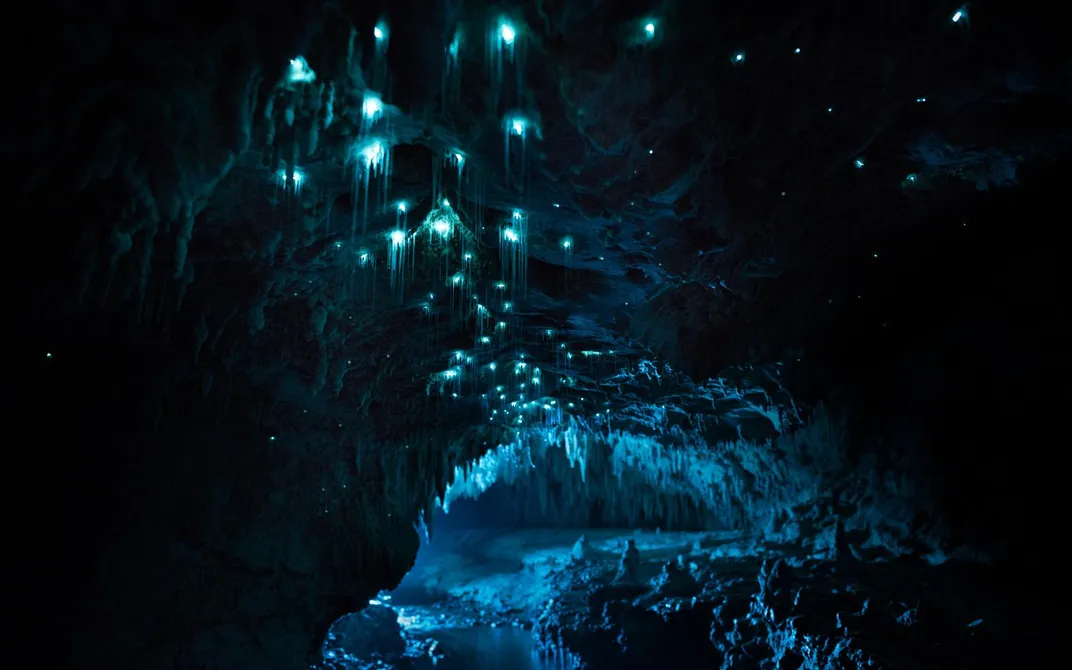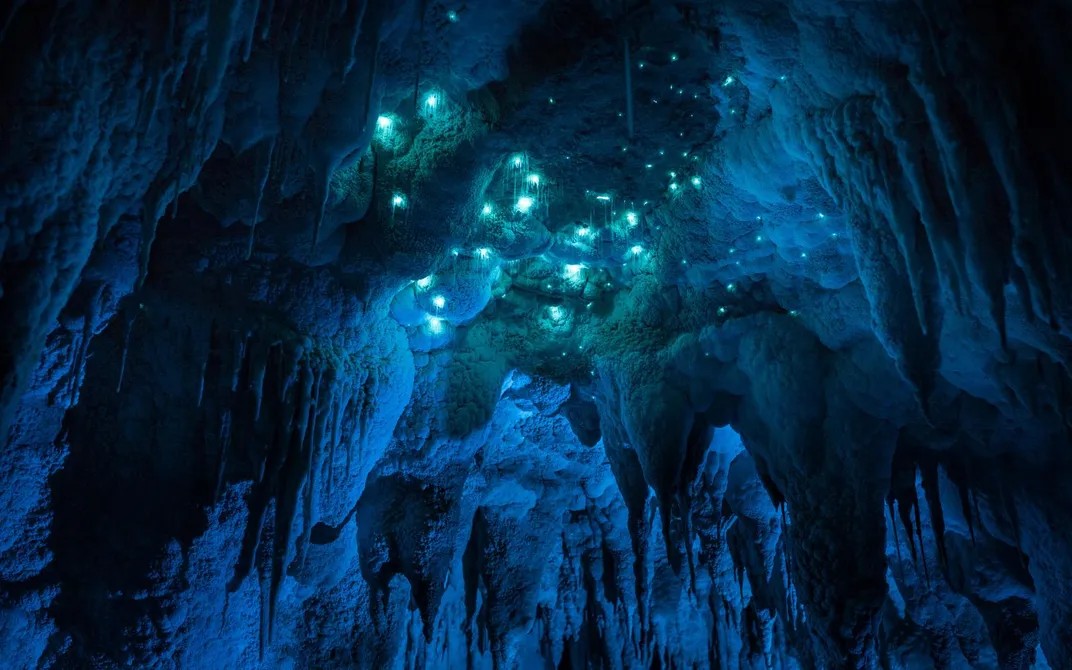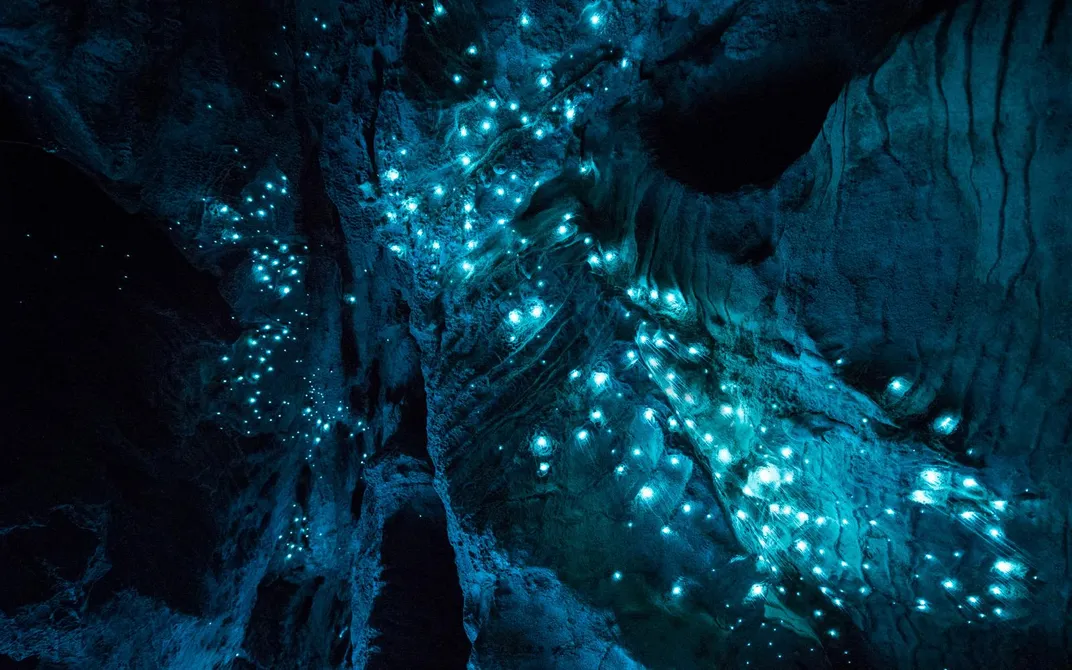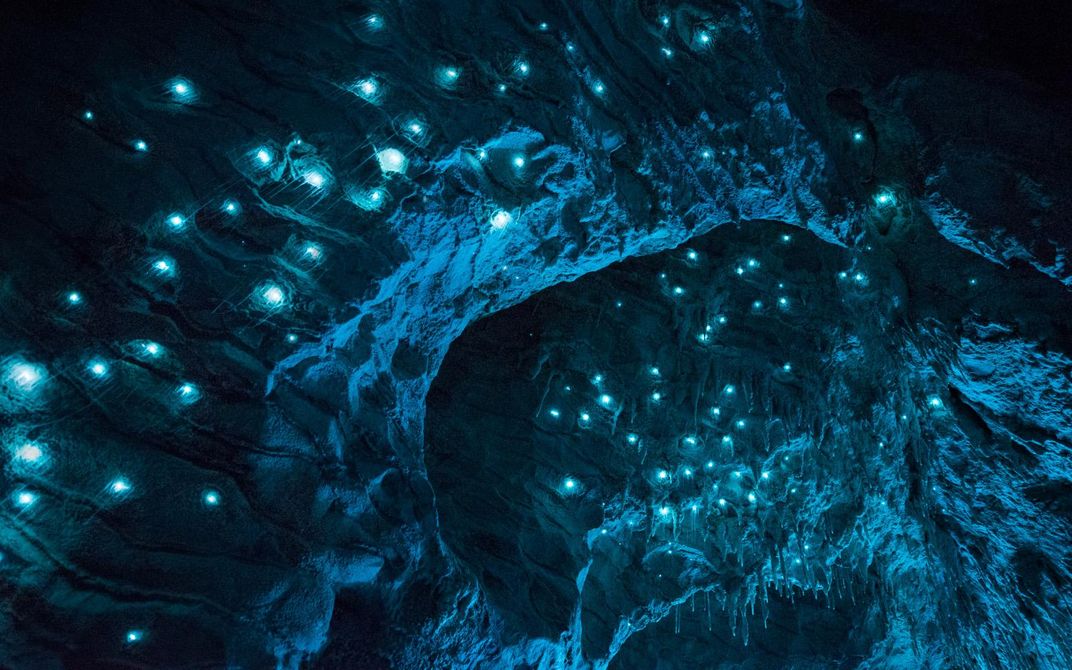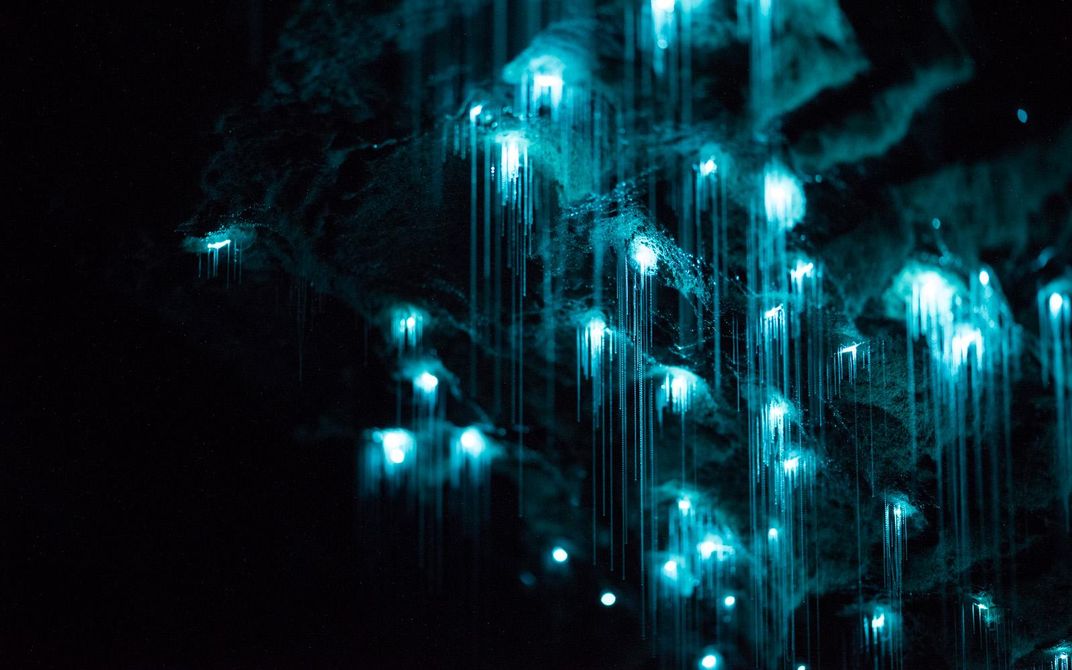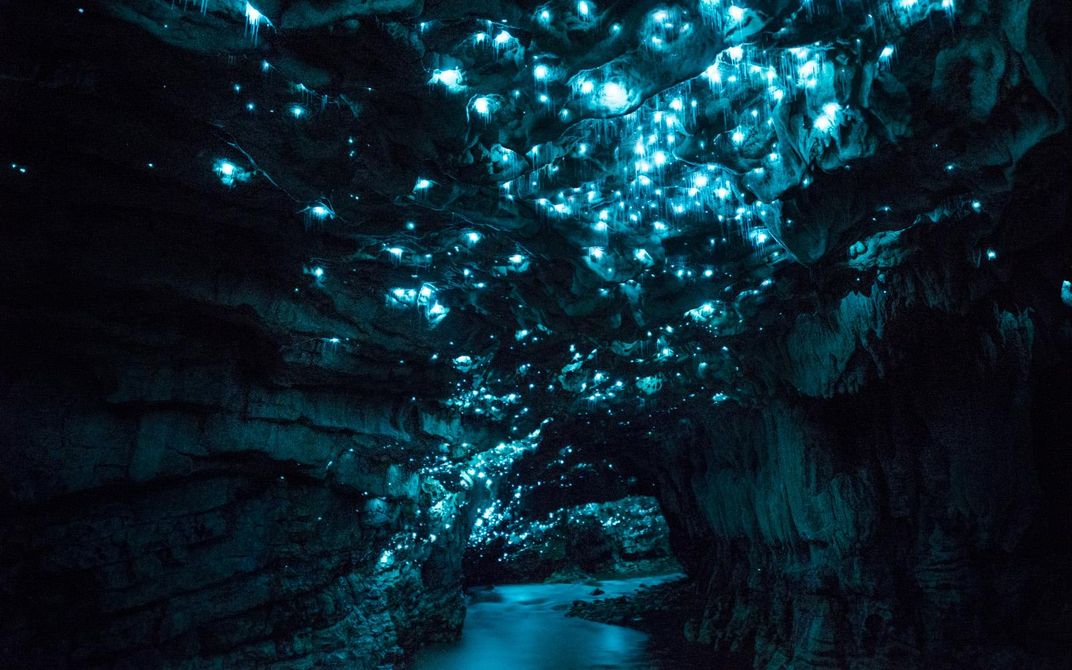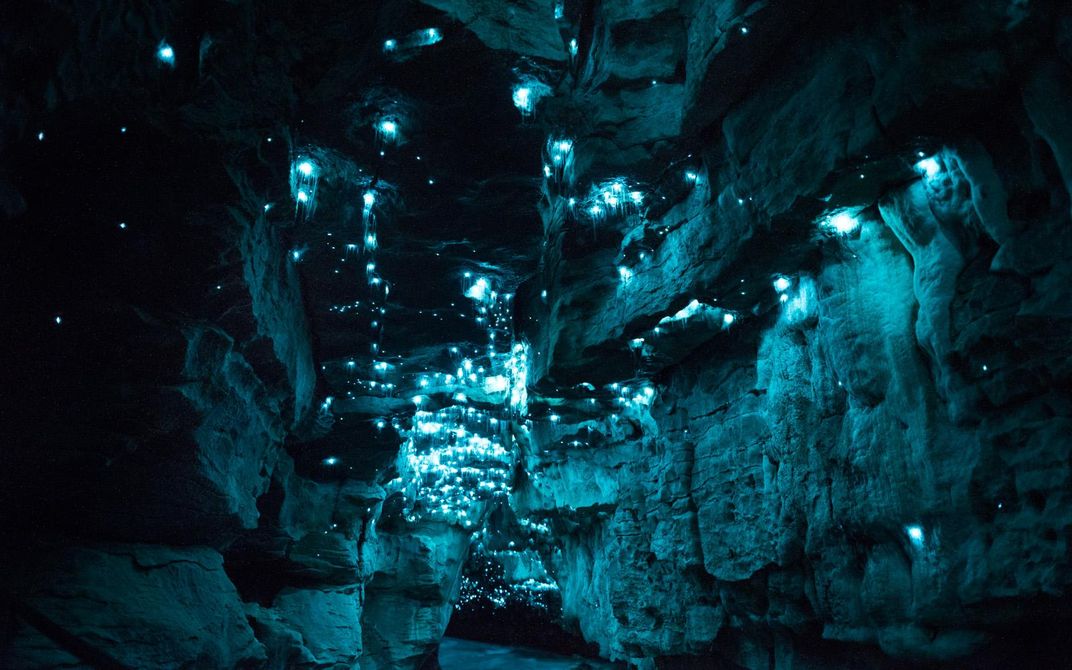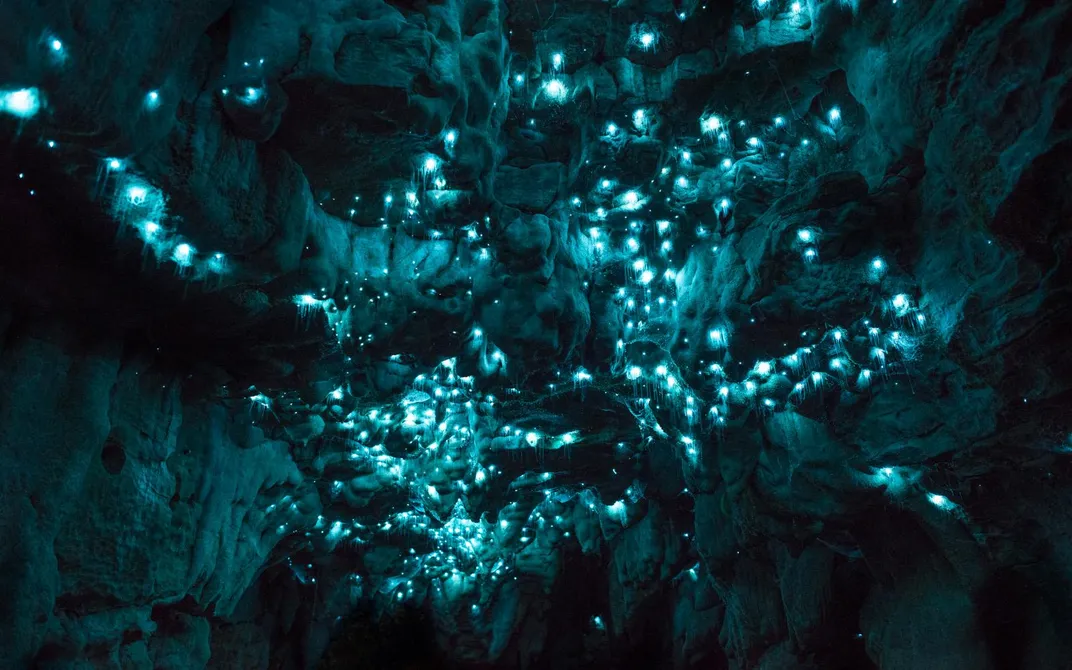Captivating Long-Exposure Photos of New Zealand’s Glowworm Caves
These new shots show the otherworldly magic created by a carnivorous fungus gnat
It's one of the world's most spellbinding sights: million-year-old limestone caves sparkling with thousands of blue-green lights, like the giant jewelry chest of some ancient sea princess. Photographer Joseph Michael recently spent several months exploring these caves, located on New Zealand’s North Island, to create long-exposure images that capture their sculptural interiors in all their luminous glory.
While the caves might appear to be dangling with precious gems, the truth is a little more down-to-earth. The cerulean glow is produced by the larvae stage of a carnivorous fungus gnat, Arachnocampa luminosa, which emits light from organs in its tail. The gnats also create sticky "fishing lines" covered in drops of mucus, which they use to ensnare prey. The bioluminescent blue light—created in part thanks to a chemical the gnats produce called luciferase—attracts the prey, which gets stuck in the mucus before being sucked up and devoured.
Arachnocampa luminosa is found only in New Zealand and thrives in the caves, which offer dark, protected spaces for their bewitching light as well as the horizontal surfaces necessary for dropping their sticky lines of death. The gnats spend about nine months as larvae before turning into pupa in a cocoon. They then emerge as flying insects that look like big mosquitoes. The adult insect lives only a few days—without a digestive system it can't eat, so its only purpose is to mate and die.
Michael, who is from New Zealand, says photographing insects was a new experience—his work usually focuses on landscapes. That informed this project's focus, he told Smithsonian.com: “[I looked] at it like a landscape, rather than individual insects. It's interesting when you view the images upside down, for example. They give the viewer a whole different perspective.” The glowworm series, which Michael calls “Luminosity,” is part of a larger multi-media installation planned around the theme of bioluminescence.
The photos were created in four caves on New Zealand’s North Island: Nikau Cave, Waipu Cave, Ruakuri Cave and Spellbound. Some of the exposures took only five minutes, Michael says, while others required hours of standing in cold water. The prolonged time in the caves was a memorable experience for the photographer: “The moving water echoes through the cave system which creates quite a loud ambient noise level. After a while the sound of the water becomes a constant hum … When you come out of the cave after a long night of photographing, the songs of insects and birds outside felt sharpened and intensified.”
The project also gave Michael a new appreciation for the wonders of New Zealand. “Growing up here, like most things in this spectacular country I thought [the glowworm] was just a regular thing to see,” he says. “As I’ve traveled to many interesting places around the world, I've begun to realize more and more how amazing and unique this little island in the South Pacific is.”
Bioluminescence isn't the only natural wonder Michael's been documenting—he's also been taking photographs of icebergs, which will be projection-mapped onto major buildings in a 2016 project. Michael calls it a “cinematic collision of nature and architecture.” “The bioluminescence work was a nice chance to take my mind off the icebergs for a little while,” he says.
Several of New Zealand’s glowworm caves are open for visitors, who can explore them by foot or by boat. And while a trip to New Zealand is necessary to see Arachnocampa luminosa, they're far from the world’s only species of glowworm. A similar species, the North American Orfelia fultoni, known more commonly as Dismalites, is found in Alabama's Dismal Canyon, among other places in Appalachia. Both species offer the chance to see just how beautiful a gnat can be.
(H/T This is Colossal)
